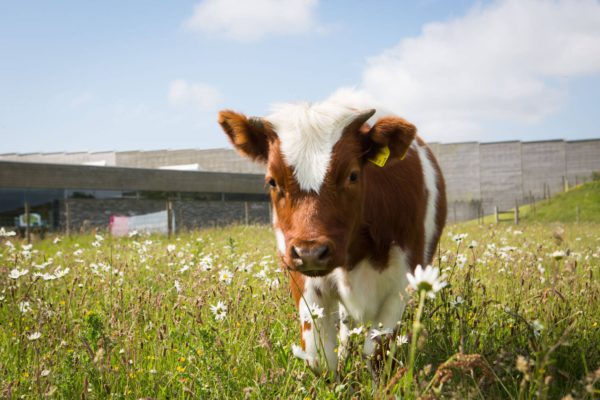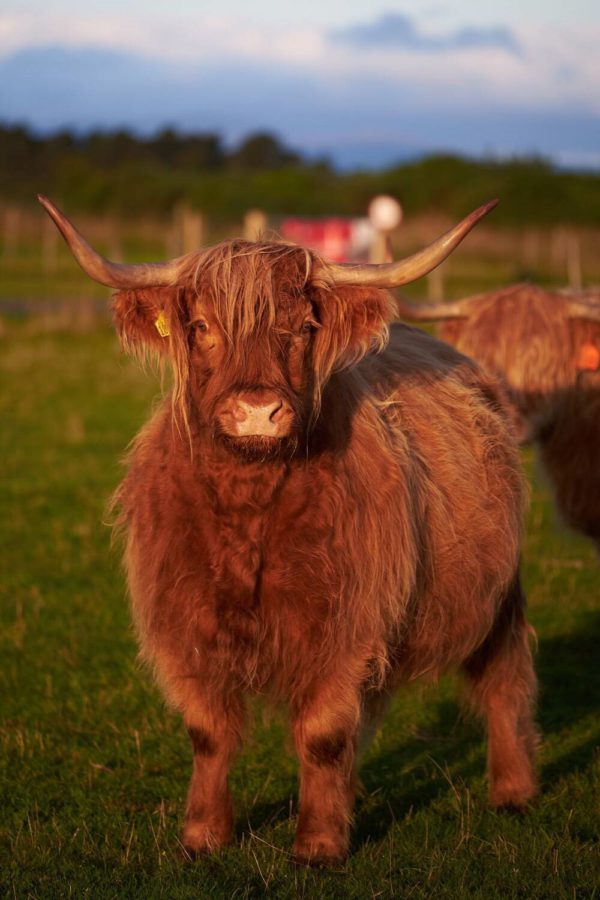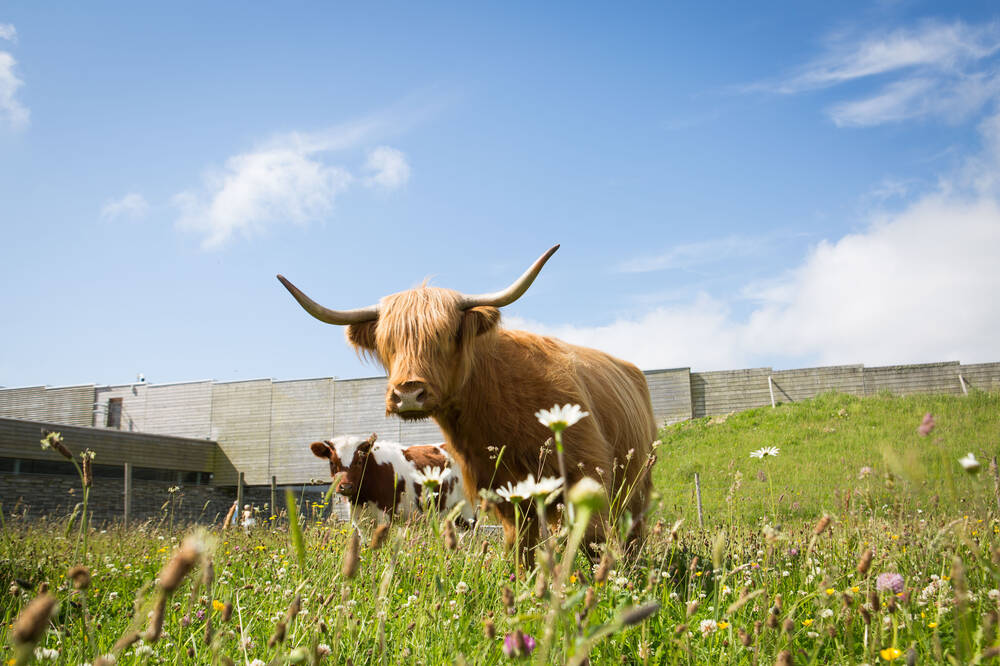
Meet the new conservation team helping to preserve and maintain the moorland at Culloden Battlefield. The latest recruits come from a great conservation pedigree and join 12 Shetland cattle, 6 primitive goats and 2 Highland ponies, who all take part in conservation grazing on the battlefield site. Working to control the scrub and create a healthy moorland, these animals play a crucial role in maintaining the landscape to showcase what Culloden Battlefield would have looked like in 1746. The National Trust for Scotland (NTS) relies on the herd to provide continuous work on the moorland to protect the archaeology of the land as well as the natural flora and fauna.
The appeal of cattle at Culloden is truly global. In particular, generous supporters in the US have been known to donate and name new additions to the herd. Some of the new cows and calves give a little nod to Culloden’s past, with Flora and Lady Anne named after strong Jacobite women who assisted the Bonnie Prince during, and in the wake of, the 1745 Rising. Others have more quirky names, including our stellar new calf, Rocket.
One of the most pivotal moments in Scotland’s history

Culloden Battlefield is the site of one of the most pivotal moments in Scotland’s history, where the 1745 Jacobite Rising came to a tragic and brutal end. It’s a place of great cultural significance and therefore it’s essential that the NTS protects it now, and for future generations. A key part of this lies with the cattle and the conservation grazing they have introduced here. It is this essential work on the battlefield, where a variety of livestock, including goats, Highland ponies and Highland cows, graze all year round. They’re an environmentally friendly and cost-effective way to ensure scrub tree growth doesn’t encroach onto the battlefield. The battlefield is now regarded as a war grave, a place where more than 1,300 men lost their lives and where many of them are buried. For many visitors, the site is a place of pilgrimage, a place linked to their family history.
Text and images are courtesy of the National Trust for Scotland. For more information on the Trust or to help them protect Scotland’s heritage see: www.nts.org.uk

